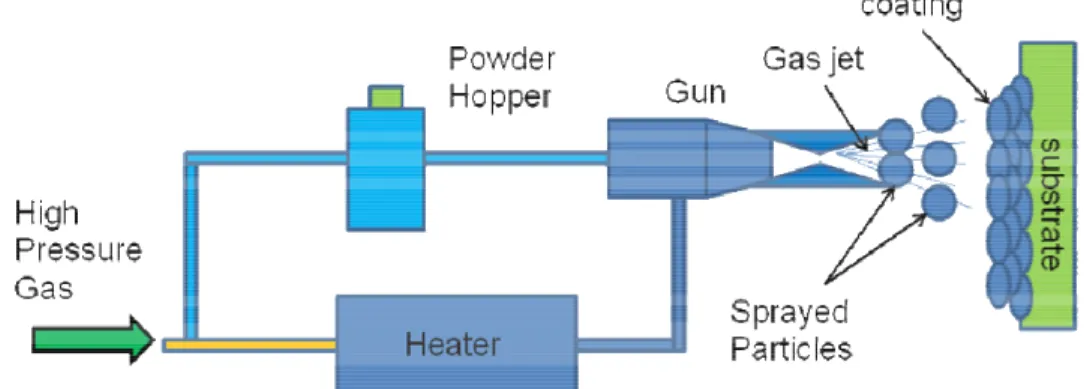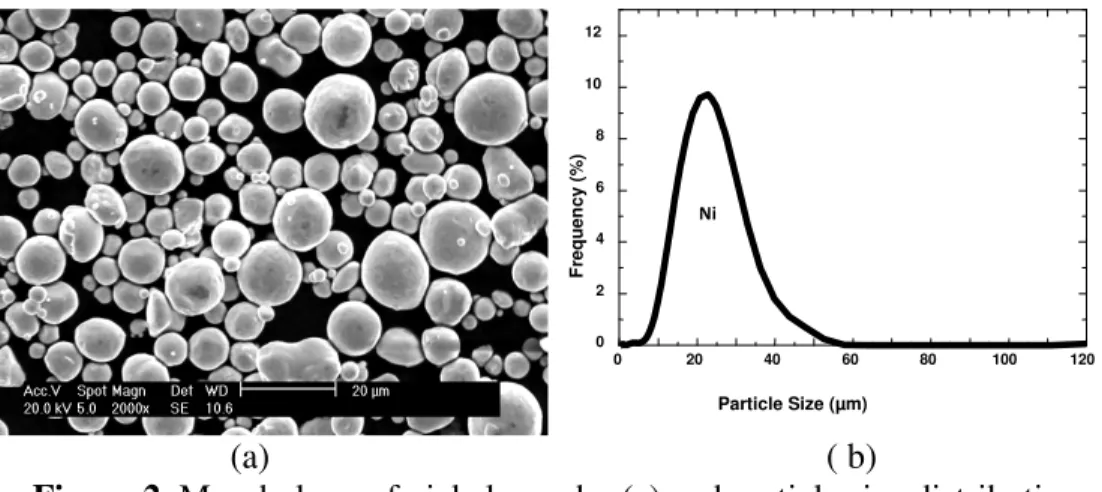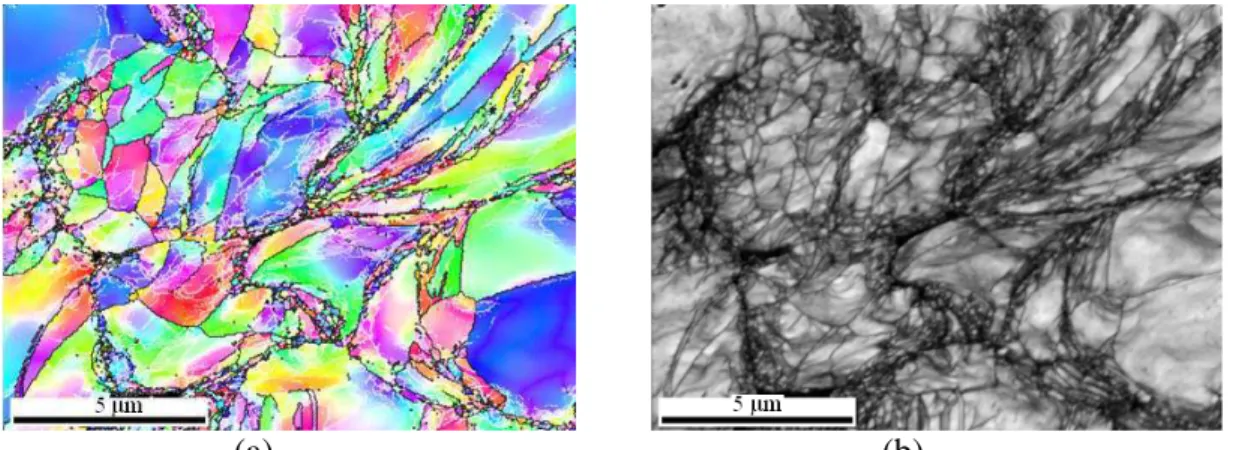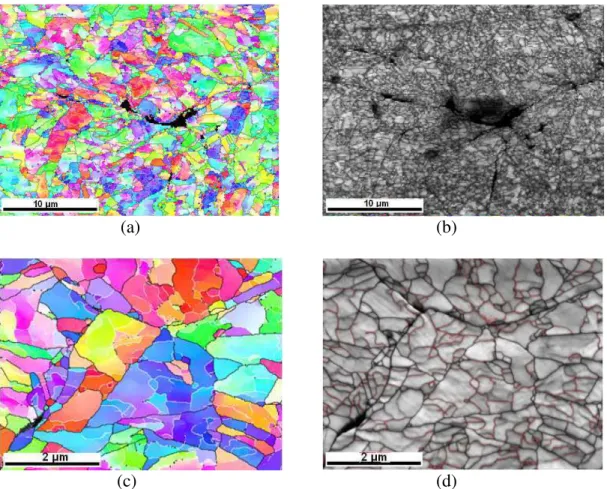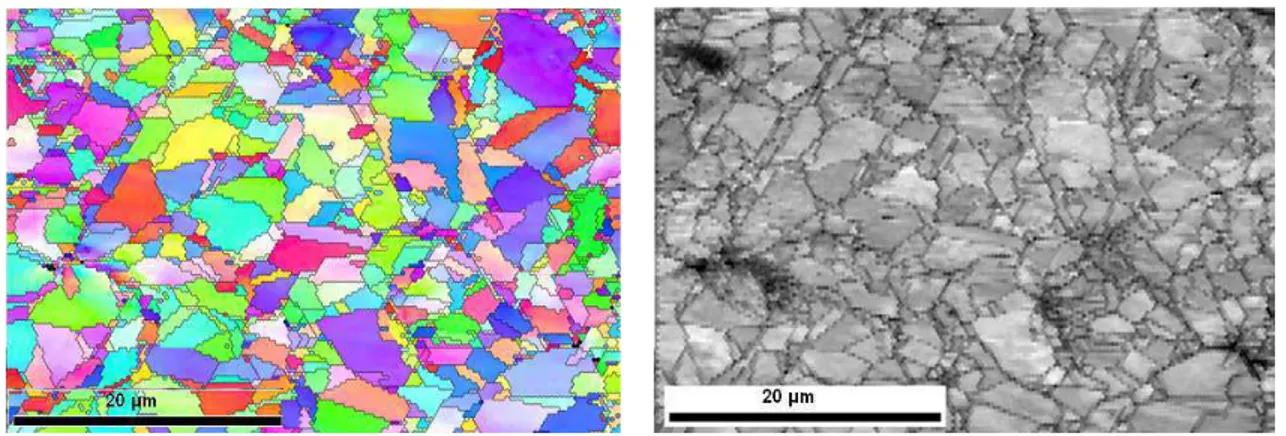Publisher’s version / Version de l'éditeur:
Vous avez des questions? Nous pouvons vous aider. Pour communiquer directement avec un auteur, consultez la
première page de la revue dans laquelle son article a été publié afin de trouver ses coordonnées. Si vous n’arrivez pas à les repérer, communiquez avec nous à PublicationsArchive-ArchivesPublications@nrc-cnrc.gc.ca.
Questions? Contact the NRC Publications Archive team at
PublicationsArchive-ArchivesPublications@nrc-cnrc.gc.ca. If you wish to email the authors directly, please see the first page of the publication for their contact information.
https://publications-cnrc.canada.ca/fra/droits
L’accès à ce site Web et l’utilisation de son contenu sont assujettis aux conditions présentées dans le site LISEZ CES CONDITIONS ATTENTIVEMENT AVANT D’UTILISER CE SITE WEB.
Material Research Society Symposium Proceedings, 2008, 1151, 2008-12-01
READ THESE TERMS AND CONDITIONS CAREFULLY BEFORE USING THIS WEBSITE. https://nrc-publications.canada.ca/eng/copyright
NRC Publications Archive Record / Notice des Archives des publications du CNRC : https://nrc-publications.canada.ca/eng/view/object/?id=d3c280e4-d7a7-49b7-bf5a-7344684bf48e https://publications-cnrc.canada.ca/fra/voir/objet/?id=d3c280e4-d7a7-49b7-bf5a-7344684bf48e
NRC Publications Archive
Archives des publications du CNRC
This publication could be one of several versions: author’s original, accepted manuscript or the publisher’s version. / La version de cette publication peut être l’une des suivantes : la version prépublication de l’auteur, la version acceptée du manuscrit ou la version de l’éditeur.
Access and use of this website and the material on it are subject to the Terms and Conditions set forth at
Structural Transformation and Mechanical Properties of Cold Sprayed Nickel Coatings after Annealing
Structural Transformation and Mechanical Properties of Cold Sprayed Nickel Coatings after Annealing
Yu Zou1, Ahmad Rezaeian1, Jerzy A. Szpunar1, Eric Irissou2, Stephen Yue1
1
Department of Mining and Materials Engineering, McGill University, Montreal, QC, Canada
2
National Research Council Canada (NRC) – Industrial Materials Institute (IMI), Boucherville, QC, Canada
ABSTRACT
Cold spray is a relatively new coating technology in which coatings can be produced by powdered particles under large plastic deformation without significant heating. In this paper, nickel coatings were fabricated by cold spray process followed by heat treatment in inert gas. Structural transformation from as-sprayed to annealed coatings was investigated by Electron Backscattering Diffraction (EBSD) in a FEG-SEM. The results show that after cold spraying sub-micron grains and subgrains with high crystal strain appear in the particle bond interface, but not shown in the center of particles. Microstructure was transformed to be uniform and stresses were released after annealing in 400°C for one hour. And ductility and formability were
significantly improved due to recovery and recrystallization. Continuous recrystallization after large strain deformation could occur after cold spraying followed by annealing.
INTRODUCTION
Cold spray is a technique used to build up layers by spraying metal powders onto a substrate at relatively low temperatures [1-3], without thermal problems associated with well known thermal spray technologies. However, metal powders are heavily work hardened after spraying [2, 4], which leads to very brittle material with high hardness and low ductility. Moreover, the microstructure of as-sprayed powder particles is non-uniform due to different strains and strain rates between the particle interface and particle centre [2]. This inhomogeneous microstructure would leave more mechanical residual stresses in the particle bonding interface and reduce mechanical properties in its application.
Figure 1. Schematic diagram of the cold spray system
Post processing heat treatment is an obvious approach to homogenize the deformed microstructure and release the residual stresses. Some publications [6-8] show substructure was
removed through recovery and recrystallization by grain boundary migration and the ductility was significantly improved by annealing. Although some researchers [9, 10] discussed about the recrystalization mechanism of the bulk metals after large strain deformation, the recrystallization mechanism of the metal powder particles under high strain deformation is still not understood well.
In this paper, EBSD was first systematically used to characterize the microstructure of cold sprayed and annealed coatings and larger areas were investigated than TEM method. Structural transformation and mechanical properties after annealing will be explained. EXPERIMENT
Nickel coatings were fabricated by the cold spray system of Kinetic 3000 CGT
Technologies, figure 1, using commercially available gas atomized nickel powder, as shown in figure 2. Gas pressure is 30 bar and gas temperature is 600°C in the present study. The nozzle stand-off distance was kept constant at 4 cm while the powder feed rate was 20 g/min and the traverse speed was 330 mm/s. After spraying, some coatings were annealed in inert gas for one hour in various temperatures up to 600°C. Vickers hardness tests were done on both as-sprayed and annealed coatings.
(a) ( b)
Figure 2. Morphology of nickel powder (a) and particle size distribution
The morphology of nickel powder and coatings were investigated by Philips XL30 FEG-SEM. The microstructure, stresses distribution and micro-texture of the powdered particles, as-sprayed coatings and annealed coatings were characterized by high resolution EBSD in this FEG-SEM instrument, fitted with TSL system. In data acquisition procedure, the scanning step sizes were between 0.05-1 µm depending on the magnification, and the EBSD data were
subsequently analyzed by TSL OIM ANALYSIS 4 software. In all the EBSD maps, boundaries with misorientations between 2° and 15° were defined as low angle grain boundaries (LAGB), depicted as white lines, and those misorientations larger than 15° as high angle grain boundaries (HAGB), depicted as black lines. In the inverse pole figure (IPF) maps presented in this paper, the grains are colored according to orientation, with blue, red and green levels proportional to the three Euler angles. The image quality (IQ) maps are constructed by the quality of an electron backscatter diffraction pattern during beam scanning. It should be noted that in all the EBSD experiments all the samples were prepared by the same procedure and the hardware and software settings were kept constant.
0 20 40 60 80 100 120 0 2 4 6 8 10 12 Particle Size (µm) Ni F re q u e n c y ( % )
RESULTS AND DISCUSSION Powder characterization
Figure 3a shows the SEM micrograph and EBSD map of the cross-section of nickel powder particles. In the EBSD map, various colors indicate different grains. As shown in figure 3a, grains in the nickel particle are nearly equiaxed. Figure 3b shows the morphology of as-sprayed coating surface, in which highly deformed nickel powder particles can be easily observed.
(a) (b)
Figure 3. (a) SEM micrograph (left) and EBSD map (right) of the cross-section of nickel particles, (b) SEM micrograph of the surface of as-sprayed coating
As-sprayed coating characterization
Figure 4a shows EBSD IPF map of the cross-section of as-sprayed nickel coating, in which various colors indicate different crystal orientation. In this map, elongated grains, subgrains and sub-micron grains can be easily observed in different regions of the particles, indicating non-uniform microstructure after spraying.
(a) (b)
Figure 4b shows the IQ map of the cross-section of the same region as figure 4a. In the IQ map, lower IQ value was shown in darker color, indicating higher crystal strain; higher IQ value was shown in brighter color, indicating lower crystal strain in this region. As shown in this figure, more crystal strain is remained in the particle bond interface after spraying.
Annealed coating characterization
Figure 5a and b show the IPF map and IQ map of the cold sprayed coating annealed in 400°C for one hour, and figure 5c and 5d are the larger magnification in the same coating. As shown in these figures, grain size is significantly decreased and HABs and LABs are almost uniformly distributed. So the microstructure became more uniform after annealing in 400°C for one hour. As shown in the IQ maps, there is no obvious dark region with low IQ value, which means the residual stresses in the particle bond interface are nearly released after annealing in 400°C for one hour.
(a) (b)
(c) (d)
Figure 5. IPF map (a) and IQ map (b) of the cross-section of cold spray nickel coating annealed in 400°C for one hour, (c) and (d) are IPF map and IQ map in higher magnification
Figure 6a and 6b show the microstructure of cold sprayed coating annealed in 600°C for one hour. As shown in figure 6a, the microstructure becomes more uniform without
400°C for one hour. The IQ map of figure 6b shows no obvious particle bond interface can be observed and the residual stresses are nearly released after annealing at 600°C for one hour.
Different from classic recystallization, termed as recovery, nucleation and grain growth, a microstructure of fine grains consisting predominantly of high-angle grain boundaries is found. No recognizable “nucleation” of the recrystallized grains occurs, and the microstructure evolves relatively homogeneously throughout the material, which process can reasonably be classified as continuous recrystallizaton[9]. Since this phenomenon normally occurs in materials after large strain deformation [9] and cold spray is a large strain deformation process at elevated
temperatures [2], so the continuous recrystallization could caused by high dislocation density under large strain and high dislocation movability at elevated temperature.
Figure 6. IPF map (a) and IQ map (b) of the cross-section of cold spray nickel coating annealed in 600°C for one hour
Micro-hardness test
Figure 7 shows the morphologies of Vickers hardness indents on the as-sprayed coating and annealed coatings. As shown in figure 7, many cracks can be easily observed on the edge of the indent, but the annealed coatings have relatively smooth indent edges without obvious cracks around. Although the hardness is decreased after annealing, the ductility and formability of cold sprayed coatings are significantly improved.
(a) (b) (c)
Figure 7. Morphologies of Vickers hardness indents of (a) as-sprayed coating, (b) coating annealed in 400°C for one hour and (c) 600°C for one hour
CONCLUSIONS
After annealing, the microstructure of cold sprayed nickel coating transforms to be uniform and the residual stresses in the particle bond interface are released. The ductility and formability are improved due to the annealing processing. Continuous recrystallization after large strain deformation could occur in the annealing process, followed by normal grain growth. ACKNOWLEDGMENTS
Research is supported by CFI project NO. 8246, McGill University.
REFERENCES
1. R.C. Dykhuizen and M.F. Smith, J. Therm. Spray Technol., 7(2), 205-212 (1998). 2. H. Assadi, F. Ga¨rtner, T. Stoltenhoff and H. Kreye, Acta Materialia, 51, 4379–4394
(2003).
3. T. Schmidt, F. Ga¨rtner, H. Assadi and H. Kreye, Acta Materialia, 54, 729–742 (2006). 4. R.E. Blose, ITSC2005:International Thermal Spray Conference, (2005)
5. F. Raletz, et al. ITSC 2004: International Thermal Spray Conference: ASM
International(2004)
6. W. Li, C. Li, and H. Liao, Journal of Thermal Spray Technology, 15(2), 207 (2006) 7. A. C. Hall, R. L. Williamson, D. A. Hirschfeld and T. J. Roemer, the 2006 International
Thermal Spray Conference (2006)
8. A.C. Hall, D.J. Cook, R.A. Neiser, T.J. Roemer, and D.A. Hirschfeld, Journal of Thermal
Spray Technology, 15(2), 233 (2006)
9. H. Jazaeri, F.J. Humphreys, Acta Materialia, 52, 3251–3262 (2004)
10. A. Belyakov, T. Sakai, H. Miura, R. Kaibyshev, K. Tsuzaki, Acta Materialia, 50, 1547– 1557 (2002)
